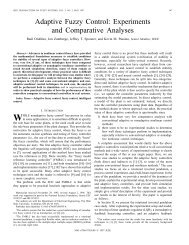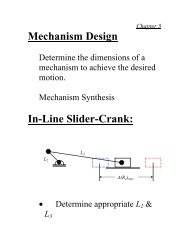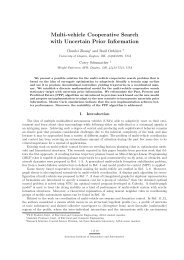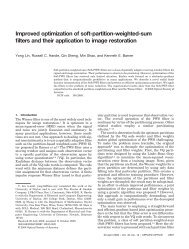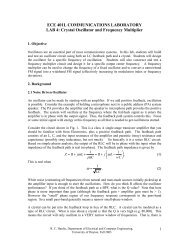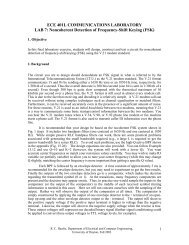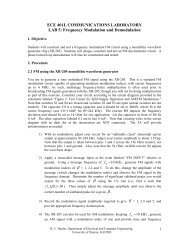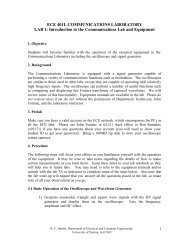here - University of Dayton : Homepages
here - University of Dayton : Homepages
here - University of Dayton : Homepages
Create successful ePaper yourself
Turn your PDF publications into a flip-book with our unique Google optimized e-Paper software.
Contributed Talks<br />
Friday 4:10–4:35 109 Oelman Hall<br />
Cyclic Arrangements <strong>of</strong> k-sets with Local Intersection Constraints<br />
Dan Pritikin*, Tao Jiang, and Manley Perkel<br />
Miami <strong>University</strong> <strong>of</strong> Ohio<br />
Abstract<br />
Given positive integers n, k, s with 0 < k < n, does t<strong>here</strong> exist a cyclic ordering <strong>of</strong> the k-sets <strong>of</strong><br />
{1, 2, . . ., n} such that every s consecutive k-sets are pairwise intersecting? For a given n and k, let<br />
f(n, k) denote the maximum s for which such an ordering exists. Phrased in terms <strong>of</strong> graphs, f(n, k)<br />
is the largest s such that the complement <strong>of</strong> the Kneser graph K(n, k) contains the s’th power <strong>of</strong> some<br />
Hamiltonian cycle in that complement.<br />
For each n ≥ 6 we show that f(n, 2) = 3. We show that f(n, 3) equals either 2n −8 or 2n −7 when<br />
n is sufficiently large, conjecturing that 2n − 8 is the correct value. For each k ≥ 4 and n sufficiently<br />
large we show that<br />
2n k−2<br />
(k − 2)!<br />
(7k<br />
− 2)nk−3<br />
2 −<br />
(k − 3)! + O(nk−4 ) ≤ f(n, k) ≤ 2nk−2<br />
(k − 2)!<br />
w<strong>here</strong> c is an absolute positive constant. This is a preliminary report.<br />
Friday 4:35–5:00 109 Oelman Hall<br />
(7k<br />
− c)nk−3<br />
2 −<br />
(k − 3)!<br />
Non-Cayley vertex-transitive graphs <strong>of</strong> order p k and valence 2p + 2<br />
Yuqing Chen<br />
Wright State <strong>University</strong><br />
Abstract<br />
We present a family <strong>of</strong> vertex-transitive graphs <strong>of</strong> order p k and valence 2p + 2, w<strong>here</strong> p is an odd<br />
prime and k > 3. The valence <strong>of</strong> 2p + 2 is the lowest possible for a non-Cayley vertex-transitive graph<br />
<strong>of</strong> order a power <strong>of</strong> p.<br />
2<br />
,




